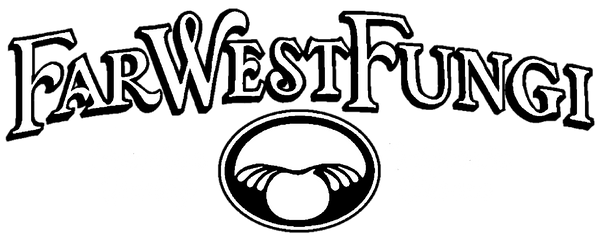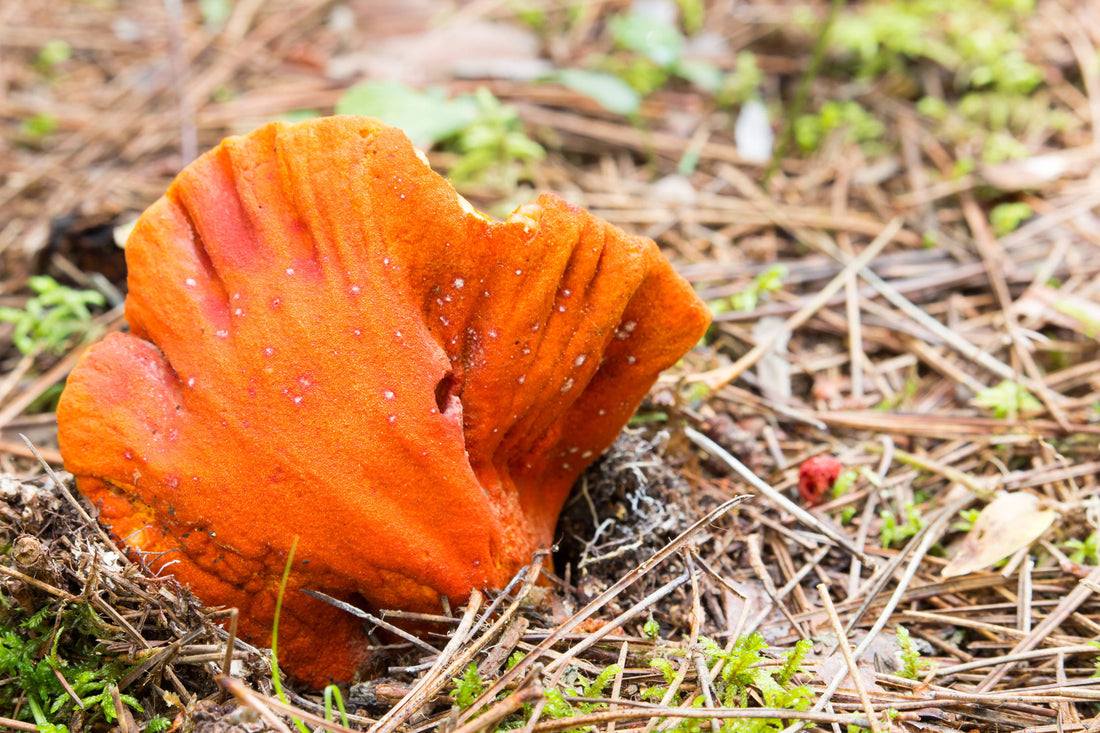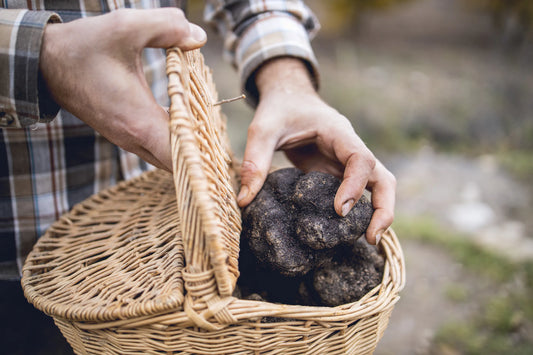It’s not hard to figure out how Lobster mushrooms get their name. Their typically bright red color resembles lobster shells, and their distinctive scent conjures the buttery aromas of a Maine coast seafood boil. In a blindfolded test, one could be fooled into thinking they were actually smelling seafood. It may come as a surprise to find out that Lobster ‘Mushrooms’ are not actually mushrooms at all - but a mushroom parasitized by another fungus. Hypomyces lactifluorum is a ascomycete fungus that infects various species of wild Russula and Lactarius mushrooms. Interestingly, the specific host species are inedible in their natural state -- either too bitter or insipid to enjoy -- but once conquered by the parasitic Hypomyces fungus, they are transformed into this delicacy, known as the Lobster Mushroom.
Lobster mushrooms grow both on the East and West coast, and are one of the few wild mushrooms that appear in the late summer, typically growing from July, all the way into the wet winter months. The host mushrooms are relatively common, so Lobsters are likely to appear wherever Lactarius or Russula mushrooms grow. Their bright color makes them easy to spot. Look for tented spots in the forest floor, where the mushrooms are pushing their way up through the loam and pine needles. When selecting Lobsters, choose ones that are dense and heavy. Older specimens will have a styrofoam consistency, and are likely to be crumbly and full of worms. Their seafood aroma should be pleasant and appealing. Just like with real shellfish, a rank fishy smell is a sign that the mushrooms are past their prime. Avoid mushrooms with sticky, dark purple areas, as this is also a sign of decay.




